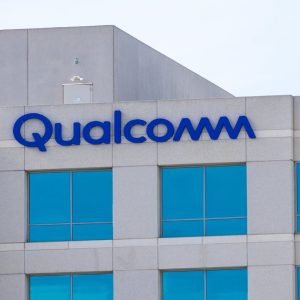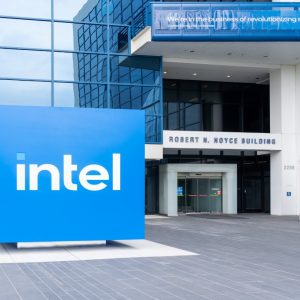Data General Corp is trying to pass itself off as a new start-up company. That’s how much the company has changed over the last three years. Gone are the days when DG might have been considered almost a mini Bell Labs (in the words of Steve Baxter, vice president of corporate marketing in the US), when the company’s diverse research and development projects extended from office management software through to visualised phone switch technology. President and chief executive Ron Skates refers to those times as a period of adolescence for the company; when the ex-Price Waterhouse accountant joined DG in 1989, the company, in his words, was going in six different directions and didn’t know what it wanted to be when it grew up. It was Skates who initiated that shake-up and it is Skates who has turned the company around and saved its neck, achieving $86m profits in 1991, against a $140m loss in the previous year, on sales up slightly at $1,229m (CI No 1,793). Over the last three years, Skates has reduced DG’s cost structure considerably – in the late 80’s, the company had 11 plants, over 17,700 employees and needed $350m per quarter in revenue just to break even (which DG wasn’t); now the company has just five manufacturing facilities, a total headcount of 8,300 and a breakeven level of $270m per quarter. (See also page 5). The focus of the $265m restructuring programme, too, was to concentrate DG on what it is good at – making good boxes from good silicon. Some have wondered whether an accountant could have the know-how to make strategic decisions about a computer business, and indeed eyebrows were raised when the Westboro, Massachusetts-based company let go its object-oriented office software division, HyperDesk, in a management buy-out last year (CI No 1,577) – everyone knows it’s the software and services that shifts one vendor’s boxes over another’s.
Not adequate
On that point, Peter Gyenes, vice president for international operations, said that if DG had retained HyperDesk in house, a product wouldn’t have emerged for a good two years, which the company felt just wasn’t adequate. He noted that HyperDesk was allowed to spin off on the proviso that Data General would have the non-exclusive right to use the object-oriented office product. Where it has been speculated that DG has been shaken out and tidied up purely for the purpose of takeover, Skates echoed Gyenes’ assurances that that was not the case, and that DG had wanted to increase its value for the benefit of shareholders and customers, and not in order to be attractive to potential buyers. Since Skates has 500,000 shares in DG, worth between $2.00 and $5.00 each, it’s in his interest to keep the company on the straight and narrow. As to one further factor that might have sparked rumours that DG was on the market namely that the company hasn’t been making high-level alliances like its competitors – Gyenes skirted around the issue and cited its 20-year strategic relationship with Motorola, and marketing partnerships with Oracle, Ingres and Sybase, as evidence that DG is making the effort. The best he could offer was that those relationships would become deeper over time. Our expertise is in the hardware, Gyenes explained – and we add value by improving the hardware. Skates added that there were no forseeable alliances in the pipeline, but said nevertheless that DG would be keeping its eyes open and might think again if the right opportunity presented itself. Another issue on which some Data General watchers have been pondering is the company’s loyalty to Motorola. With the development of the Power PC, some have questioned Motorola’s commitment to the 88000 RISC, which is the underlying component of DG’s AViiON line of Unix machines. Skates’ attitude, however, is positive and confident. We couldn’t be happier with Motorola, he enthused, saying that he thought the development of the Power PC chip, which uses the same fabrication process as the 88000, would actually benefit the 88000 in terms of building its credibility.
By Sue Norris
The ACE consortium
, he said, has some serious problems; with the recently-announced DEC-Microsoft alliance, he forewarned, trouble’s coming. Besides, Skates remarked, Motorola spends more on scrap than MIPS Computer Systems spends on its RISC development. He admits that DG has been nervous about the recent images portrayed about the future of the 88000, but he concludes, and confidently, that Motorola’s technology will win out. I wouldn’t have said that three years ago, he said, and in two years from now, who knows?. But for the moment he’s happy, and is adamant that he’s not talking to the other RISC developers, though he does admit to having been approached. Vice president of AViiON development Allan Jennings, perhaps more qualified to address the question, noted that no other RISC has built-in symmetric multi-processing. Does that mean AViiON and its DG/UX 5.4 Unix operating system will suffer if the future of the 88000 RISC does begin to look uncertain? DG says not, claiming that DG/UX is not dependent on the Motorola device. On the proprietary MV Eclipse machine, running DG’s AOS operating system, which boasts 42,000 installations worldwide and still accounts for 65% of the company’s hardware revenues, Data General’s motto is still MVs are forever. More realistically, MV will continue as long as there is a demand – according to DG, that demand still exists; MV installations increased to 42,000 from 40,000 over the last year. More than 1,000 applications are up on the system and some 500,000 Eclipse customers use the system to run DG’s CEO office automation software. Target markets for the Eclipse are federal government, health care and manufacturing. And, in Europe, air traffic control is an important sector. Last year, DG established a dedicated MV division, the Eclipse Business Unit, which is aiming for an annual system price/performance improvement of 30%, and a two to three year product cycle. According to Steve Baxter, the research and development split between MV and AViiON systems is 50:50, and MV is a fundamentally long-term part of DG’s strategy. The benefits of MV, as described by Gerry Paul, vice president for Eclipse development, are its interoperability with other hardware, its inherent commercial design and DG’s continued investment in its adaption.
Future of MV
MV development is being focused on a high-end ECL gate array-based system, Hitachi Washi CMOS technology for the low-end and mid-range systems; a new client-server version of the AOS operating system with kernel-based communications transports and a re-designed file system; and a new releases of CEO, which this year celebrates its 10th birthday. Next year, a high-end MV machine will be launched, featuring single-board mainframe-class CPU, high-capacity system bus, one to four processors, one to six input-output channels, and operating system and database software scaled to mainframe levels. One move which demonstrates how serious DG is about continually evolving the Eclipse machine, is the decision to introduce RAID 5 (redundant array of disks) technology to the MV line. As to the AViiON Unix boxes, which have incorporated RAID 5 technology for the last five months, sales are predominantly and strategically server-based commercial sales. Skates’ reasoning is that the margins and value-add of computers for the next five years will be servers. DG’s reasons for focusing so vehemently on the commercial Unix market are that the commercial sector is the most level playing field, with no one company particularly dominant, so that any manufacturer with value-add can win. Skates promises a 300 MIPS AViiON machine next year. AViiON is as competitive as anybody, he says, citing RAID as key to DG’s strategy. We have the products, the technology and the financial strength now, he concludes, speaking of DG’s future prospects. But he’s not daft; Skates concedes that times may be hard for a while to come.






